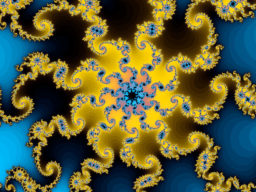A map is not the territory it represents, but, if correct, it has a similar structure to the territory, which accounts for its usefulness.
— Alfred Korzybski, Science and Sanity (1933, p. 58)
We say that the map is not the territory, but if the territory includes the map, there must be a point on the map that represents itself. ‘On a map of an island laid down upon the soil of that island there must, under all ordinary circumstances, be some position, some point, marked or not, that represents qua place on the map, the very same point qua place on the island’ (Peirce, CP 2.230; see also EP2:161-2, BD ‘Imaging’). The same must be true of any “map of the world,” any iconic sign which takes its context as its object. Hence any viable guidance system inhabiting a being inhabiting its world must involve self-reference.
Here we have a map of the Island, lying flat on the Island itself. It doesn’t cover much of the surface of the Island, yet it represents all of it, iconically, to you. The Map is a sign whose object is the actually existing Island and whose interpretant is the form of the Island in your imagination. This representation exemplifies what Peirce calls Thirdness.
Now suppose your point of view rises high enough above the Island (above the Earth) that you can see all of it, as if on Google Maps or Google Earth: the map on the Island is visible only as a single point on the googlemap. But now suppose that the googlemap is capable of unlimited resolution, so that you can zoom in on the map far enough to view it in what we call ‘actual size.’ Now you realize that there is a point on the map (the original map, the omap) which represents the map itself lying on the surface of the Island. And now suppose that you can keep on zooming in on that very point until it grows to the actual size of the omap. Now it is no longer a point but a large set of points (an infinitely large set, actually) representing the place on the Island where the omap lies, and representing the omap itself to you. Still, on this map within the omap which represents the omap, you can mark a point representing where the omap lies on the Island. But if the omap itself is capable of infinite resolution, you can keep on zooming in on map after map – and on each map, you can mark the same point representing the omap within the map, and zoom in on it to find another actual-size map with that same point on it.
Now, as everyone knows, infinite resolution is a fantasy and a ‘point’ with zero dimensions is a mathematical abstraction. But in our thought-experiment, the Island is real, and the omap is actually lying on it. So if the dream of infinite resolution could be lived, there must be (at least) a point on every map, no matter how many times you zoom in on the map in it, which represents the next point you could zoom in on in real time to see the next map represented on it. And if you reverse the process, no matter how far you zoom out, that same point must be there on the map on which the location of the map is marked.
We have been using the word point in reference to a τόπος, a place. But a 0-dimensional point cannot contain anything. Topologically, if a “map” (a surface) is continuous, and no place is marked on it, there are no points on it at all. No matter how far we zoom in, we never arrive at a place that contains no other places. Just as everything that exists (‘stands out’) in any given universe is a discontinuity in it, every point marked on a line or a surface, or in a space, is a discontinuity of it.
Yet the making of a mark creates the possibility of representing the relations between marks on a continuous surface or in a continuous space. The representation is iconic, but the relations depicted in it may be real. Such a representation of existing things or events creates the possibility of observing real relations between them, relations which have a specific character independent of any particular observation of them. If those relations are real, then the universe in which the relata are marked must be really continuous. There can be no definite discontinuities except in a continuum; nothing can mean anything except in a meaning space.
